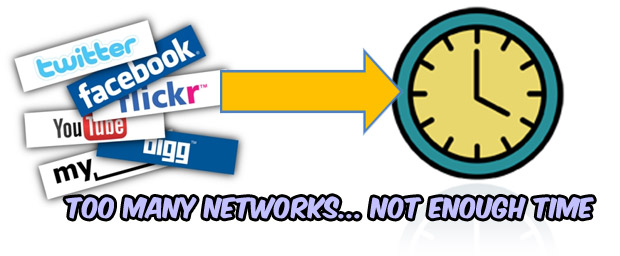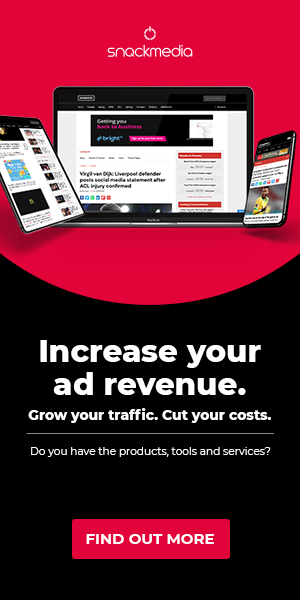Don’t be a digisports whore, less is more.
Guest Post: Matthew Quinn (@matthewaquinn) is currently ranked 22nd in the Top 50 VOD Professionals table, StreamUK’s Digital Solutions Director spent 10 years working for LiverpoolFC’s digital media department beginning with content production and eventually managing video systems and the strategic delivery of club media through TV, web and mobile outputs for both the official channels and club partners. He is now working with StreamUK to help several other Premier League Football clubs deliver their own video service.
After the various sports conferences over the last month or so the conversations about social media have become a little overwhelming. Likewise the social media tables, awards ceremonies and general cock waving that becomes part of the regular new wave of sports press is getting to be a little without substance. I worry that the message that might be taken from all of this is to blindly follow suit. Engagement hype is at an all-time high but for me clubs are doing too much without focus on the goal.
Let’s look at what your average clubs are using to “engage” with their fans (the quotes are sarcastic but we will get to this later). The clubs official site, message boards, Twitter, Facebook, YouTube, Vimeo, club video offering/ player, Pinterest, Instagram, Weibo, FourSquare, Fancam, Vine, Fantasy Football, official apps, gaming, email newsletters – the list goes on.
There is no formula that has been proved to be the most successful for sports organisations. Each one has its own different leaning to one or more of the above that proves to be more effective in one way or another. However, it continues to baffle me how the various sporting organisations have the resource to service so many of these platforms relentlessly with the small crews they have in their media departments. More so how do they then measure, evaluate and refine these offerings effectively? Even trickier is the ability to convert the likes, re-tweets, follows and check ins to something tangible – revenue.
Well defined strategy is lacking in many sports digital media departments and this is due to a combination of things.
Sporting organisations are stuck in this awkward place between being a brand and a traditional sports club, many of which are old school institutions of owners, chief execs, secretaries, managers and players with one simple goal, to win the competitions they are in. Many of them now realise that they have to become a brand and drive revenue through creative and cold hard business means to keep up with the competition, but the resistance from within for proper investment in new growth areas is often difficult to break down and can result in lazy execution of modern technology.
Another cause can be the polar opposite, the appointment of some very creative and talented individuals who are massively aware of the digital landscape and have a great deal of free reign. They seem to feel the need to employ every tool in the book to “engage” (wait for it) with their fans in some kind of mission for digital pioneer status. This then sends an avalanche of copycat behaviour into the digisport world where other clubs jump on the bandwagon in an attempt to keep up and save face.
What we end up with is some great content from the clubs but it is often spewed out with omnidirectional veracity, hence my sarcastic quotation marks around engagement. What does this output really do for the club? Well that’s the ultimate question and I think if you asked the various clubs many would struggle to give you a comprehensive answer, though in fairness and to stop this being a total rant there are some who do have a good grip.
Don’t get me wrong, as fans we love it, we think it is great but what does it contribute to the bottom line of the club. In most cases probably very little to nothing.
Engagement, in my opinion a word that is used incorrectly and all too often in digisports. True engagement is about a bi-directional interaction between two parties to evolve something and provide an element of reward for both parties. In this case an effective relationship between the sports brand and its audience. An effective engagement proposition raises the ability to develop the existing fan base, access and initiate relationships with fans they have yet to reach and territories it wishes to venture into with the sole aim (and let’s make no bones about this) to generate more revenue by either direct or indirect methods. In turn this revenue is ploughed back into the team to buy better players, better backroom staff, better facilities to win more games, gain more fans, grow more revenue – it’s the sports circle of life.
As an ageing, balding dad I now find myself telling my 8yr old daughter when trowelling on makeup – less is more, and this is so true in sports digital media. Brands should use a small, well selected collection of technologies to truly engage help to achieve this aim but ultimately concentrate on the ones with the best yield. These technologies should be used to entertain and converse with the fan base whilst driving fans to somewhere ultimately more beneficial for them and the club. This way more focus can be applied to those products and services to give them a higher quality output, better reflection of the brand and a true engagement experience for the fans. It gives clubs the ability to turn that service into something that serves the both the fans and the business more rewardingly on both accounts.
So what guise can take? Let’s look at video which is the most engaging medium on the planet and is a superb tool for attracting fans especially when you possess such great content. In particular let’s look at YouTube. You need silly amounts of traffic to drive revenue from YouTube videos but it is great for getting big numbers of viewers. There is often crippling restrictions in place for putting sports content on YouTube so your best content can’t live there. Technology wise YouTube is a free service and provides you with no SLA and can change its terms and conditions when it wants. It also doesn’t uphold your brands identity and can offer related content to something entirely different and potentially damage your existing commercial relationships (ie a Coke advert when you have a partnership with Pepsi)
Like any platform brands shouldn’t just be on YouTube for the sake of it, they should use it to their advantage. It is part of the best video search engine in the world so you can immediately grab a large chunk of fans searching for you. Once you have them there don’t give them a reason to remain there. Tease, tantalise and upsell whatever you want to be moving them towards, most likely your official video offering where your best clips and highlights live behind a paywall or revenue generating mechanism which should be on an (coughs) award winning online video platform (I had to get a plug in somewhere).
Make your YouTube content short, if it is too long then you will appease their fix for your brand and they won’t go onwards. Check your stats, find what is working and use it to drive better content both on YouTube but more importantly on the official site. Use the tools available to you to maximise the effect, YouTube’s Content ID platform can protect your exclusive content and can be used to gather data, remove them from non-branded pages or allow it to happen but monetise them when not on your site to cover the costs of your effort. In turn this may provide interesting information as to where your content is surfacing and reveal some potential new areas for exploitation.
You will no doubt have to have several explanations prepared for senior staff and fans as to why you aren’t on Flickr or Blogspot (for example) but commercially these should be easy to explain. Eventually when you have a well-defined strategy for each of these platforms and it actually achieves its goal then its time to look at the next ones. But to start with, less is always more.
About author
You might also like
SPORTEL 2021: Day One Recap
This year’s prestigious SPORTEL convention kicked off in sunny Monaco today, welcoming a host of familiar faces as well as plenty of new ones. Doors opened at 8:30am with businesses
Six Founding Riders Set To Bring The Vision Of The UCI Track Champions League To Life
Olympic Champions, UCI World Champions and World Record holders join the new track cycling competition debuting in November 2021 The UCI Track Champions League is delighted to announce that six
Sports related spending to soar this summer as pre-pandemic life resumes
New insights from eBay Ads UK reveal the potential for brands to engage with an excited but nervous nation as sports events get back on track As pubs and indoor









